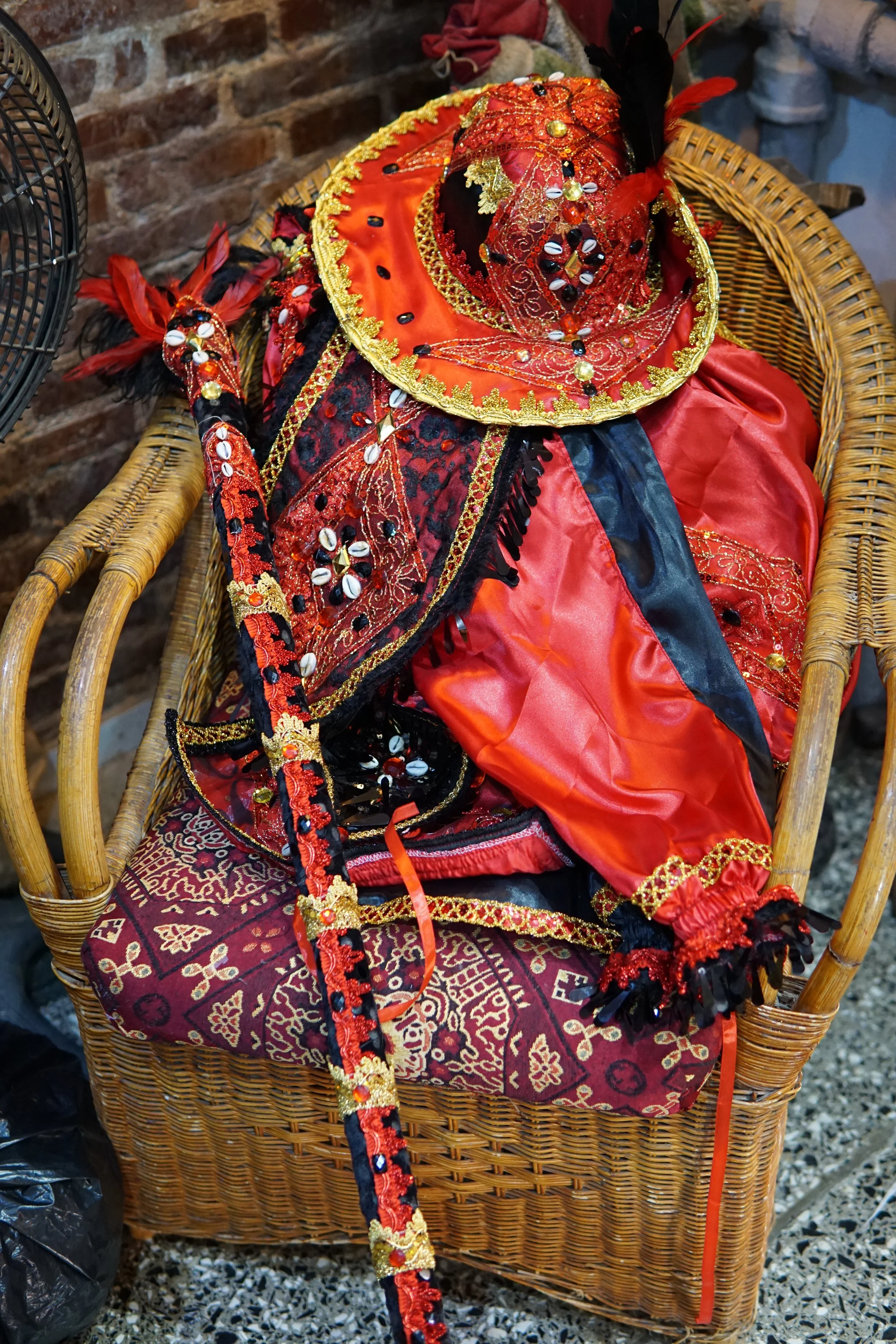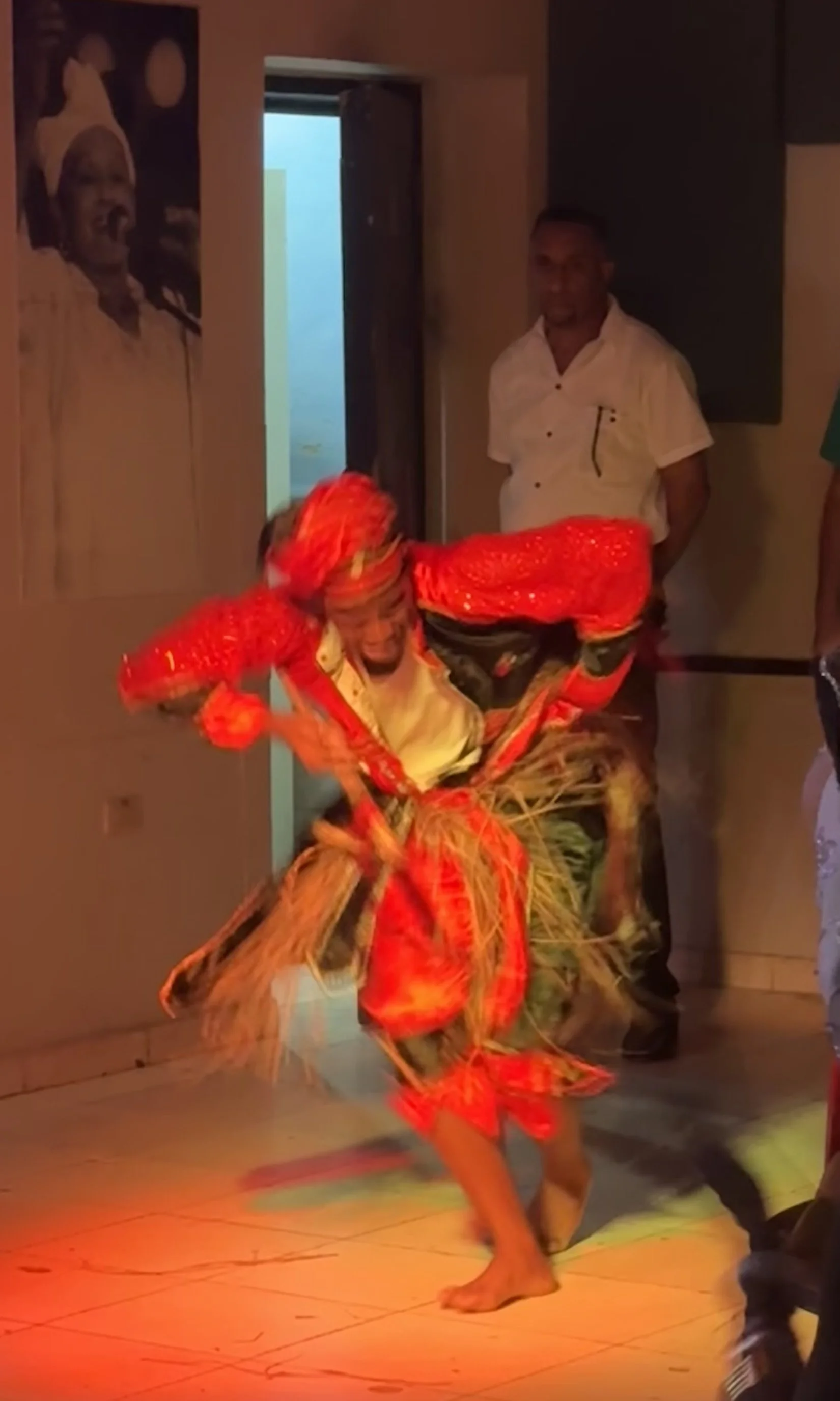Meeting Eleguá on the Way – by Mariama de Brito Henn
Earlier this year, our PhD candidate Mariama de Brito Henn traveled to Havana, Cuba, for a three-week fieldwork visit as part of her doctoral research. Her work explores Afro-Cuban religious practices, material culture, and performance – themes that came vividly to life during her time on the island. From museums to neighborhood music halls, she encountered the presence of Santería everywhere. One figure in particular stood out during her journey: Eleguá, the orisha of beginnings and crossroads, whose mischievous spirit and vibrant imagery seemed to guide her path throughout the trip. In this blog post, Mariama offers a glimpse into those encounters – and into the complex, living culture of Regla de Ocha in contemporary Cuba.
Santería might have been illegal for a long time, but its impact is undeniable in Cuban culture. In the three weeks I stayed in Havanna, I’ve seen the visual culture of Regla de Ocha in Museums, on the street, in music halls and apartments. It’s been no surprise that it was Eleguá, the trickster god, master of the crossroads and connector between worlds, art that greeted me most frequently, through art, his materiality and performances. For example when I visited the Museo Nacional de Bellas Artes, where he presented himself in. Roberto Diago’s work Eleggua Regala los Caminos from 1949. The horned beast, reminiscent of the Yoruba sculptures of Eshu from the 19th and 20th century is rarely found in modern interpretations of the deity.
We met again in the Casa de África in Old Havanna. The museum was opened in 1986 and exhibits part of the collection of Cuban anthropologist Fernando Ortiz (1881 -1969) and newer acquisitions. While the ground floor is dedicated to the history of slavery on the island, the second and third floor represent the living African cultures in Cuba, such as Palo Monte, the Abakuá societies and of course Regla de Ocha. In a display dedicated to the material culture of Santería Eleguá sat in a corner accompanied by his brother Ochosi, the hunter, dressed in their dominant colours red/black and blue/gold.



Later on when I met with Javi, a dressmaker who specialised in orisha costumes. The first costume he presented belonged, again, to Eleguá, but vastly more lavish than the costume in the museum. Javi spends days decorating the dresses, which are worn by initiates and dance performers alike (albeit orisha dancers are normally practitioners too). And while this costume is more detailed, the fundamentals are the same, the palette is red and black, he’s wearing a hat and not a crown, is and always accessorised with a staff.
Towards the end of my trip, I saw him in action. Eleguá opened, as is it is his duty, the performance of the orisha dancers in a neighbourhood music hall in central Havanna. Dancing to his praise songs, his mischievous character came through in his interactions with the audience and band, playing some drums, standing on tables, demanding attention. While it was a public performance, it was also clear that for many in the audience it became a place of worship. The performers received gifts, blessed audience members and truly became the representations of the gods for as long as they wore their clothes.

